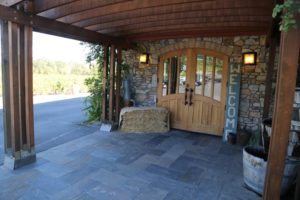
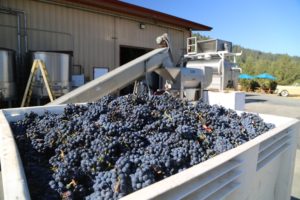
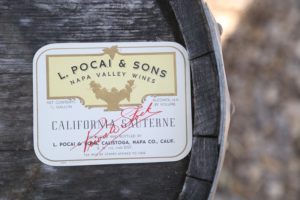 Ballentine Vineyards is located directly across from Faust Winery (previously St. Clement Winery). One driving by on Highway 128 used to only see their sign from the northbound direction (that is no longer the case); during early visits, we used to see bumper stickers in their tasting room that read, “Where the Hell is Ballentine Vineyards”! The answer to that question is simply, just north of the town of St. Helena.
Ballentine Vineyards is located directly across from Faust Winery (previously St. Clement Winery). One driving by on Highway 128 used to only see their sign from the northbound direction (that is no longer the case); during early visits, we used to see bumper stickers in their tasting room that read, “Where the Hell is Ballentine Vineyards”! The answer to that question is simply, just north of the town of St. Helena.
Ballentine Vineyards was founded by William “Van” and Betty (Pocai) Ballentine (Van passed away in 2019 and Betty in 2023); today their son Frank Ballentine is the general manager; he is also currently the president of San Francisco based, GreenLeaf Produce. GreenLeaf began in 1976 and has evolved to carry a variety of specialty items including vegetables, dairy, meats, baked goods and cheeses, supplying restaurants in the San Francisco Bay Area.
Today there are numerous small family-owned wineries in Napa Valley, but only a few wine making families in Napa Valley have as old or as rich of a heritage on both sides of the family. Their history in the U.S. begins when Betty’s grandfather, 22 year old Libero Pocai, an immigrant from Lucca, Italy (see our photos of this city at the bottom of this profile) immigrated to Guerneville in 1884 to work in a logging camp. In 1891 he was involved in a hotel in Susanville, CA but had to give up on this business when his hotel was destroyed by fire in 1893. He returned to Guerneville. According to an article in The Napa Valley Register dated October 8, 1952, Libero also worked as a winemaker in Guerneville and made wine on the side. He met Maria Cristofani, also an Italian immigrant while both were living in Guerneville. They married in 1892 and then moved to San Francisco where he worked in wood and the coal business.
In 1906 the devastating earthquake and resulting fires destroyed much of San Francisco. Fortunately Libero and Maria moved to Napa Valley a year prior seeking out better climate in the summer for Maria’s health (she lived to be 94); they purchased 60 acres of land in the northern part of Napa Valley and six years later founded a winery near Calistoga called L. Pocai & Sons Winery and Vineyards. It was bonded winery number 115. Libero died in 1936. Pocai’s two sons, Henry & Frank eventually took over operations of the winery; Frank was Betty’s father who was married to Betty’s mother Anna. By the 1950s the winery was producing about 50,000 gallons of dry wine a year, selling it primarily as bulk wine. Over the years it won medals for its wines at various competitions including at the California State Fair in 1951, earning a gold for their Claret and a bronze for their Sauvignon Vert. The last vintage produced at L. Pocai & Sons Winery was in 1982. Remarkably this physical winery is still standing although it is no longer being used for winemaking.
Van’s father John Ballentine moved to Napa Valley in 1922 and in a gutsy move, considering this was early Prohibition years, purchased 160 acres and a winery in the hills of what is now known as the community of Deer Park. This site was the original home of John Sutter Wine Company which was later founded as Sutter Home Winery by the Trinchero family at their current location in the southern part of St. Helena. Today Bremer Family Winery operates on the old John Sutter Wine Company property. And if you ever wondered how Deer Park got its name (no, it wasn’t named for the deer that used to and still sometimes roam the hillsides), rather John Ballentine named it after his family farm in Ireland.
As soon as Prohibition ended, John produced his first wine in 1933, bottled under John J. Ballentine in Sanitarium, California; Sanitarium was named for the nearby hospital and was the original name of this community prior to Deer Park.
Van and Betty were raised surrounded by agriculture and or were in the wine business for all of their lives. Betty used to work at Charles Krug as an accountant for Robert Mondavi and Van was the vineyard manager for the old Christian Brothers Winery and their affiliated properties in the late 1950s and 1960s. And their other son Bill Ballentine owns the prestigious and very tiny production William Cole Winery – almost on the other side of the highway from Ballentine Vineyards. Bill’s son Cole is actively involved there along with other wine brands, Predecessor Estate and Smoking Gun.
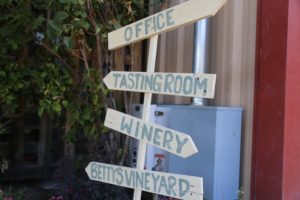
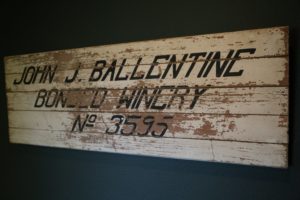
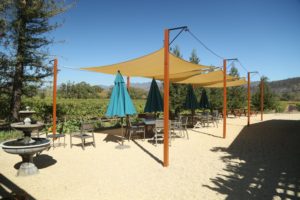 Before starting their own winery, the Ballentine’s sold grapes to many premium area wineries including Caymus, Robert Mondavi and Rombauer. Fast forward some 30+ years since John Ballentine bottled his last bottle of wine; Van and Betty decided to make their own wine in 1992. Initially they produced their wine at another winery for a few years until they built their own winery in 1995 located just south of their vineyard home. A sizable barrel room is on site and is home to not only their own wines but to also a number of mostly small premium custom crush clients. While their production at their high point was around 15,000 cases, today they are much smaller focusing on direct-to-consumer sales (rather than retail and restaurants) – with wine sold primarily through their tasting room and wine club. As of our last update to this review, they are producing around 2,500 cases annually.
Before starting their own winery, the Ballentine’s sold grapes to many premium area wineries including Caymus, Robert Mondavi and Rombauer. Fast forward some 30+ years since John Ballentine bottled his last bottle of wine; Van and Betty decided to make their own wine in 1992. Initially they produced their wine at another winery for a few years until they built their own winery in 1995 located just south of their vineyard home. A sizable barrel room is on site and is home to not only their own wines but to also a number of mostly small premium custom crush clients. While their production at their high point was around 15,000 cases, today they are much smaller focusing on direct-to-consumer sales (rather than retail and restaurants) – with wine sold primarily through their tasting room and wine club. As of our last update to this review, they are producing around 2,500 cases annually.
All grapes come from three long time family-owned properties (they still sell grapes to various wineries). The longest under family ownership is the 46-acre Pocai Vineyard (purchased by Betty’s grandfather in 1906) in exchange for gold coins. This lengthy vineyard is quite historical; it is located next to one of Napa’s iconic vineyards, Three Palms Vineyard which was originally owned by Lillie Hitchock Coit, the namesake of San Francisco’s Coit Tower.
The second oldest owned vineyard is the 21-acre Betty’s Vineyard located next to the winery; this was purchased in 1944 by Van and his father John. Today Betty’s Vineyard is planted to a number of varieties including Merlot and Syrah and what are now extremely rare white varietals in the Napa Valley, Chenin Blanc and Malvasia Bianca (two blocks of Chenin Blanc and a small section of Malvasia Bianca located right next to the tasting room and outdoor tasting area).
And their ‘newest’ vineyard, the 17-acre Fig Tree Vineyard was purchased in 1949 and is located on the northeastern edge of the St. Helena appellation across from the present day Reverie II Winery. The vineyard takes its name from two fig trees on site given to the family from a friend who brought them back from Italy.
Select Wines
Whites
Ballentine produces Malvasia Bianca, a white variety rarely grown in Napa Valley. Malvasia likely originated in Greece. In 2021 they produced their inaugural sparkling wine from this variety. The 2021 Ballentine Betty’s Vineyard Malvasia Bianca Sparkling Wine (methode traditionelle, 100% varietal) is deep gold in color; the bouquet offers plenty of fruit including of Golden delicious apple – this particular aroma reminds us exactly of the resulting aromas from juice accumulated when we used to core apples on our parent’s wooden bench in their garage. There are additional scents at play here including of baked apples, honeysuckle, walnut skin, a sweet thread most resembling that of ripe pears and a very subtle herbal character. The palate offers flavors of mandarin orange and assorted stone fruits including apricot and nectarine. Brightly light and highly refreshing, each sip begs another. Dry with a residual sugar of 0.8, flavorful, balanced and highly unique – we could easily drink this wine all day. And its alcohol level is comfortable at 11.7% and its pH is a refreshing number of 3.01. If there was ever a candidate for a breakfast wine, this would it. Or pair with fresh oysters.
The 2017 Ballentine Betty’s Vineyard Malvasia Bianca (Frizzante wine) Ballentine Vineyards has made this wine dry before; this particular vintage is off dry with noticeable residual sugar. Pale gold in color with a bouquet that is fairly easily recognizable with notes of petrol, lemon meringue and ruby grapefruit. Clean and sweet across the palate with tropical flavors including guava, passion fruit and pineapple. The bright acidity helps temper the sweetness. Those who enjoy drinking well-made sweet wines will surely want to seek out this one.
In part, Ballentine has built a reputation among Chenin Blanc enthusiasts for their own limited production bottling of this variety. Chenin Blanc is a wine rarely produced any more from Napa Valley based wineries despite being formerly widely planted throughout the valley. The economics of growing Chenin Blanc versus Cabernet Sauvignon and other red varieties do not make sense and the planted acreage began dwindling quickly by the late 1980s. The 2019 Ballentine Betty’s Vineyard Chenin Blanc is medium golden in color and offers aromas of lemongrass, lime, green apple and a wintergreen nuance. As the wine breathes, the aromas begin to show some tropical fruit notes including mango and pineapple. Juicy with expansive flavors across the palate including grapefruit, lemon/lime and kiwi. Clean and balanced from start to the end with a bright finish. This is a dry wine, with no residual sugar.
Reds
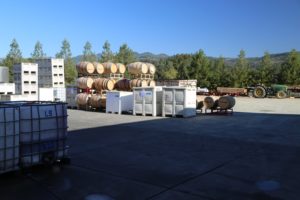
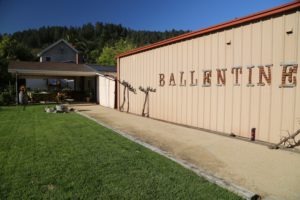
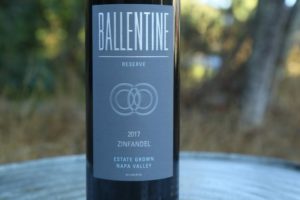 Their primary focus is on red wines with excellent Zinfandels; several Zinfandel wines are made from separate blocks in their vineyards). In fact, they have a number of wines available for tasting including 100% Cabernet Franc and 100% Petit Verdot which in Napa Valley, are varieties not often made as standalone wines. And often slightly older wines will also be available for tasting or purchase at the tasting room.
Their primary focus is on red wines with excellent Zinfandels; several Zinfandel wines are made from separate blocks in their vineyards). In fact, they have a number of wines available for tasting including 100% Cabernet Franc and 100% Petit Verdot which in Napa Valley, are varieties not often made as standalone wines. And often slightly older wines will also be available for tasting or purchase at the tasting room.
The 2023 Ballentine Vineyards Cabernet Franc (inaugural vintage) is deep ruby and opaque; straight up, the bouquet smells both fresh and fruity. The compelling scents include dark plum, black cherry, blackberry jam, boysenberry spread and Pakistani mulberry with lighter aromatic threads including lilacs, rose petals, mint and chocolate. But mostly the presence here is focused on its core of fruit. And we should also add, there are no herbal or green characteristics associated with either the bouquet or the palate, often a hallmark of this variety. Mouth filling deliciousness, this wine tastes like dark cherry, blackberry, boysenberry, Santa Rosa plum, Persian mulberry and dark raspberry. In a blind tasting we probably would have guessed its ABV as around 14.9 when in actuality, its listed ABV is 15.5%. Balanced, bright and crowd friendly, we would love to try this again in another 8-10 years. It finishes lively with broadly dispersed, grainy, gravelly and at this age, still gritty textured tannins; their presence far outpaces the fruit with a drying character.
The 2021 Ballentine Merlot is a thoughtfully made blend of 82% Merlot, 12.5% Cabernet Sauvignon, 2% Petite Sirah, 1.5% Petit Verdot, 1% Malbec and 1% Cabernet Franc. This wine is medium ruby in color; the bouquet is ripe, opulent and showcases plenty of fruit and baking spices including aromas of dark cherry, blackberry, raspberry, cinnamon stick, nutmeg, mocha, espresso, caramel, and freshly baked chocolate brownie. It also features several more subtle layers of both floral and herbal characteristics including violets, dried sage and a hint of pink peppercorn. This wine offers flavors of dark raspberry, red cherry and plum. The tannins are dusty, lightly drying and rounded in their textural feel. Their presence is felt more on the front of the palate rather than the rear. This wine is 15.2% alcohol with a light but lingering feel of warmth on the back of the palate. We could see pairing this wine with either lamb or pork chops, preferably both from the BBQ.
The 2021 Ballentine Cabernet Sauvignon is a blend of 80% Cabernet Sauvignon, 12% Cabernet Franc, 5% Malbec and 3% Petit Verdot. This wine is deep ruby in color; the bouquet sports aromas of red plum, red cherry, leather, a meaty character, tomato sauce, dried mushrooms and a hint of tonka bean. One would not be incorrect if they called its scents, savory. But give this wine time to breathe in its youth as its core of fruit will eventually open and will dominate over the other aromatics. The palate is a union between both red and darker fruits including plum, blackberry and blueberry. Lingers with both a woodsy spice and a crushed peppercorn character. The tannins are dusty, pixelated and grainy in their textural feel. Both their still tightness of texture in this wine’s youth and flavor persist for some time on the long finish. And one can feel a lingering warmth on the back of the palate from the 15.4% listed alcohol. Pair with a BBQ and a tri tip.
The 2017 Ballentine Reserve Zinfandel is a blend of 93% Zinfandel, 4.5% Petite Verdot, 1.5% Lagrein-an extremely rare variety and 1% Petite Sirah. This wine is dark ruby in color; aromatically this wine is intense with ripe blackberry, plum, violets and notes of sage and cracked pepper. Also, secondary aromas of mocha and vanilla (almost similar to aromas from a Thai iced tea) and some toasted cedar. Sports a very intriguing bouquet with a lot of aromatic depth that falls just short of being jammy. High octane on the palate with both an intensity of fruit and noticeable tannins along with 15.6% alcohol. Finishes with a grip of granular somewhat woodsy tannins and darker spices including pepper. Definitely a rich and hedonistic showing.
During past visits, we have really enjoyed their Zinfandel Port-style wine. These wines have not been overly rich or viscous or syrupy sweet like some of the Zinfandel ports we have tried.
The 2005 Ballentine Vineyards Napa Valley Petit Verdot (tasted 17 years post vintage date) is dark brickish red/brown in color; the bouquet offers a variety of tertiary aromatics including of dried walnut, coffee, tar and hazelnut along with cooked blackberry, chocolate, darker baking spices and some notes of leather. The palate offers bright acidity with flavors of red plum, raspberry, dried currants and a lingering earthy, woodsy and savory note. The tannins must have been fairly robust in its youth; today they are still very much noticeable (but not heavy) and are gravelly in their textural feel. They continue to persist for quite some time.
Visitors seek out this winery when ready to try wines other than Cabernet Sauvignon – during our visits over the years we have always noticed the majority of wines available for tasting or purchase are non-Cabernet Sauvignon wines. And Ballentine Vineyards has always over delivered on their quality to price point.
Visitors to the tasting room can choose from a variety of experiences including a general tasting of their current releases, a reserve tasting focusing on their single vineyard and more limited production wines, a tour including highlights of their fascinating history in the valley and a tasting (including a barrel sample), and weather permitting – tastings outside.
The tasting room is small, feels informal and is all about the wine – no gift shops or loud music here. A tiny lab is even located near the actual tasting counter. Note that the tasting room can fill up fast if a group or tour van stops by. And in 2020 Ballentine Vineyards added/upgraded an outdoor space next to the tasting room – containing several tables under shade sails directly next to part of their vineyard.
For more information and or to join their wine club (access to quarterly release parties, discounts on wine, complimentary tastings), visit: www.ballentinevineyards.com
Present day, Lucca Italy
Cemetery, Lucca Italy






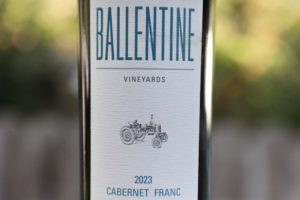
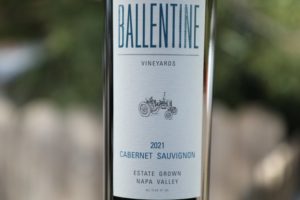
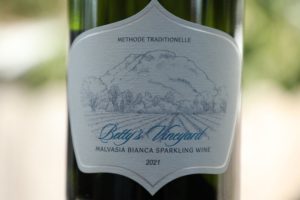
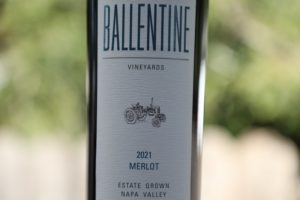
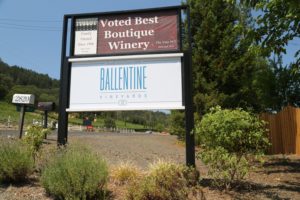
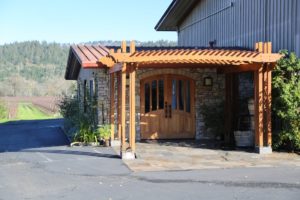
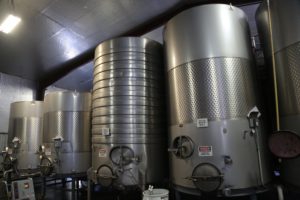
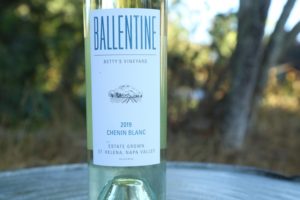
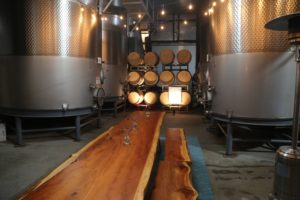
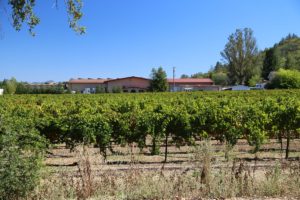
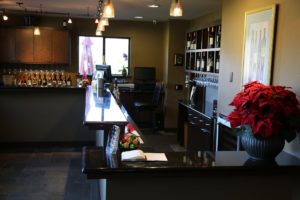
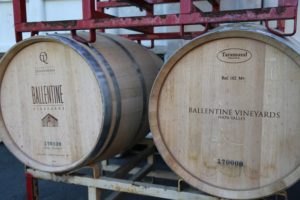
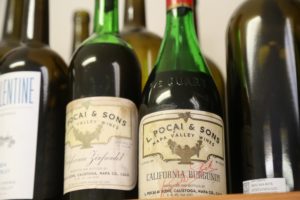
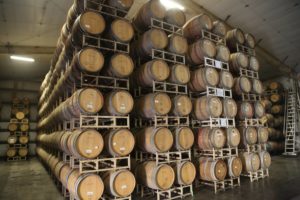
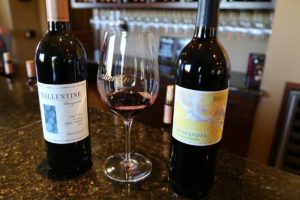
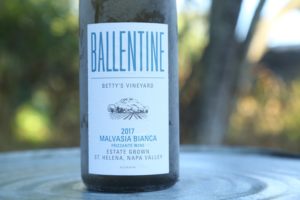
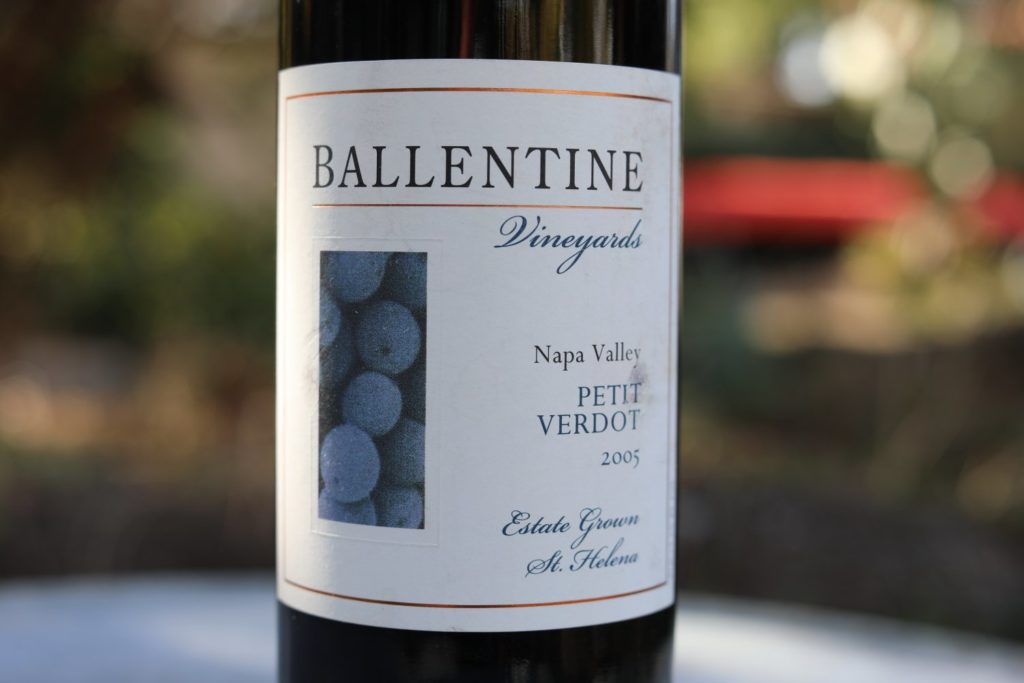
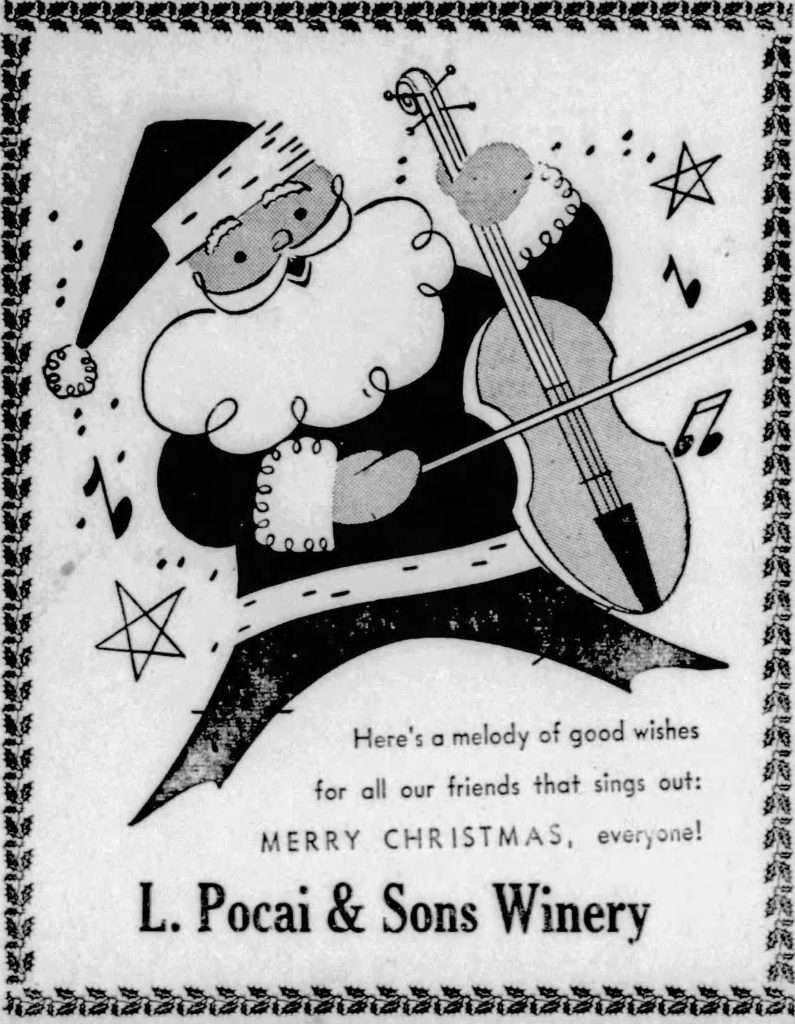
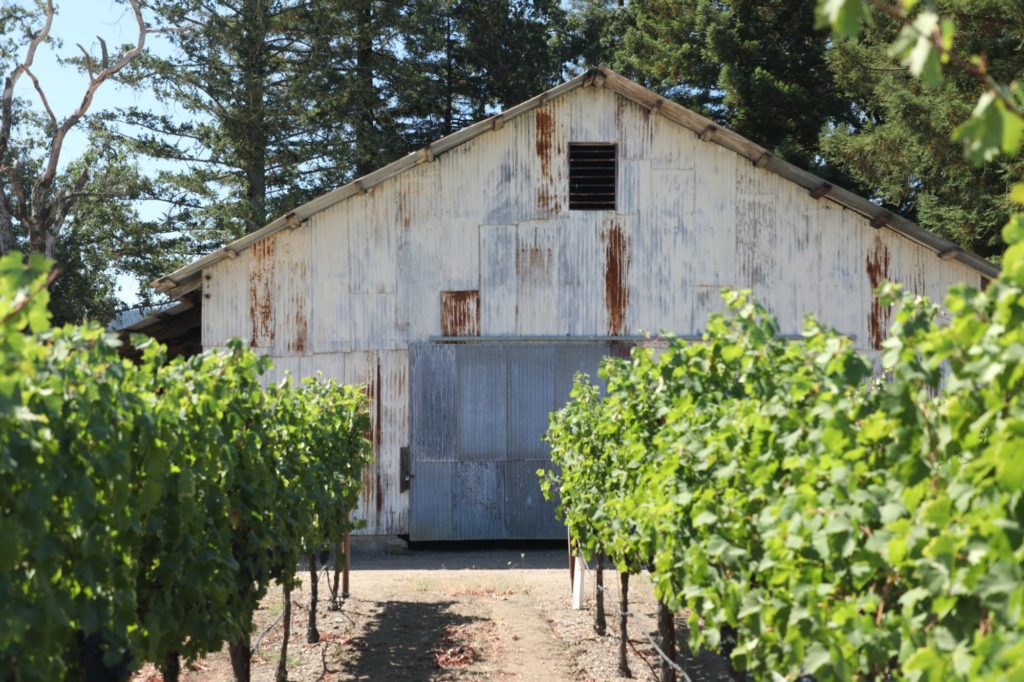
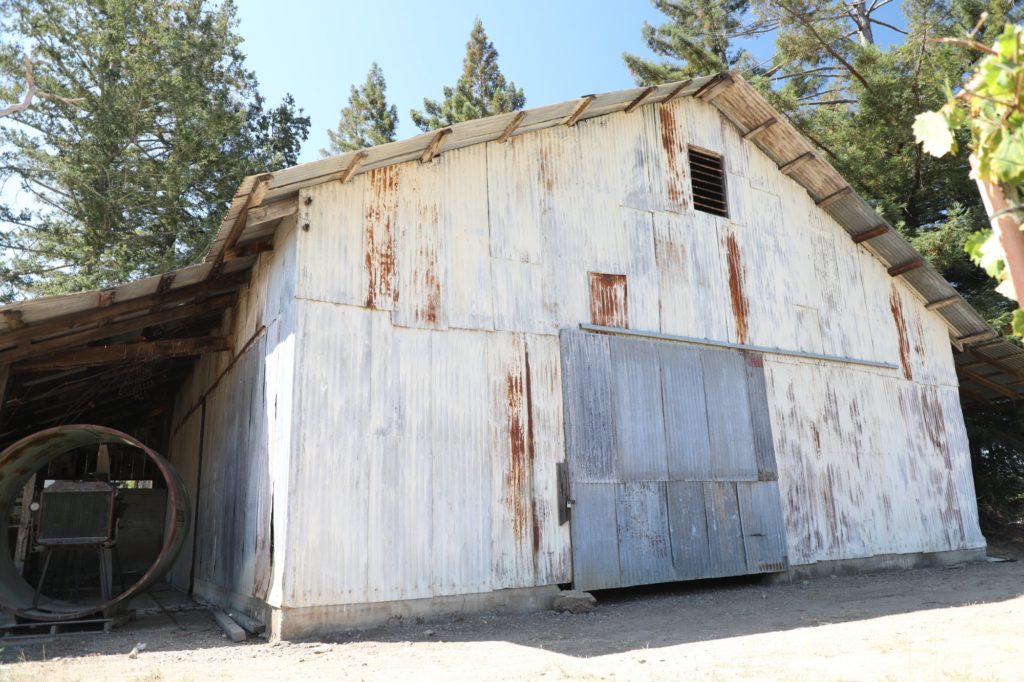
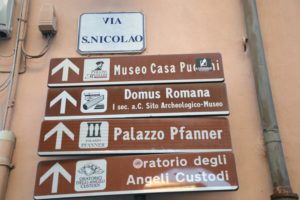
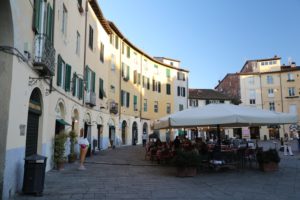
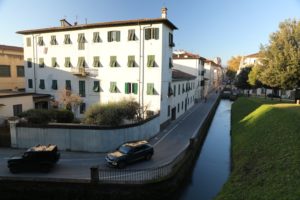
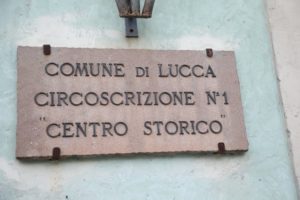
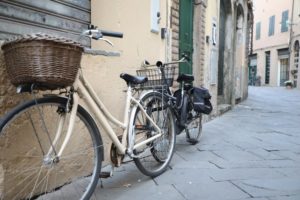
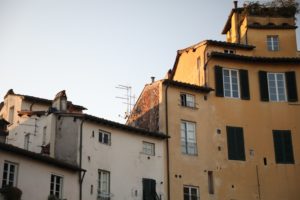


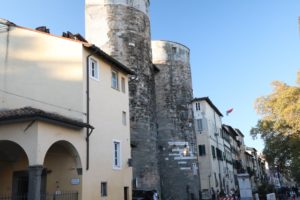
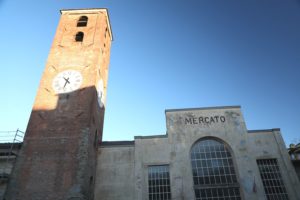
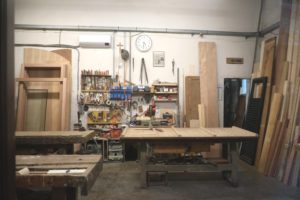
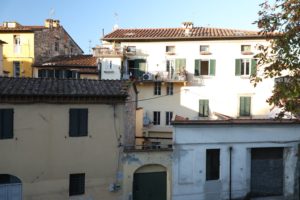
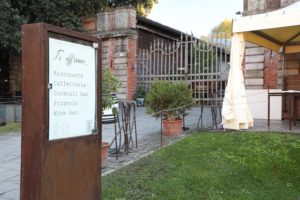
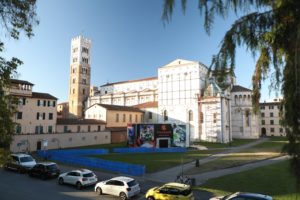
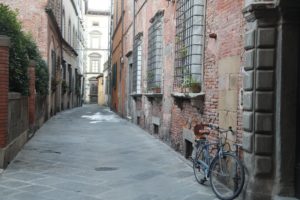
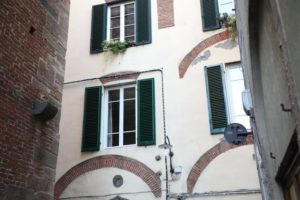
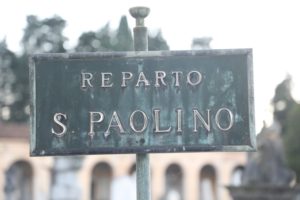


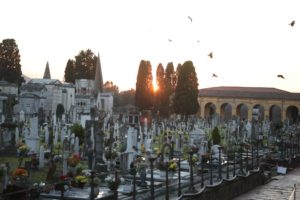
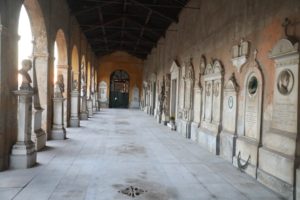
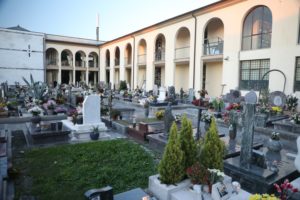

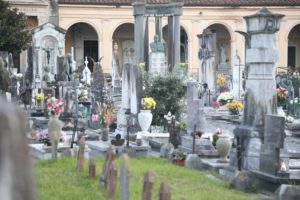
I want a barrel
Aj – don’t we all 🙂